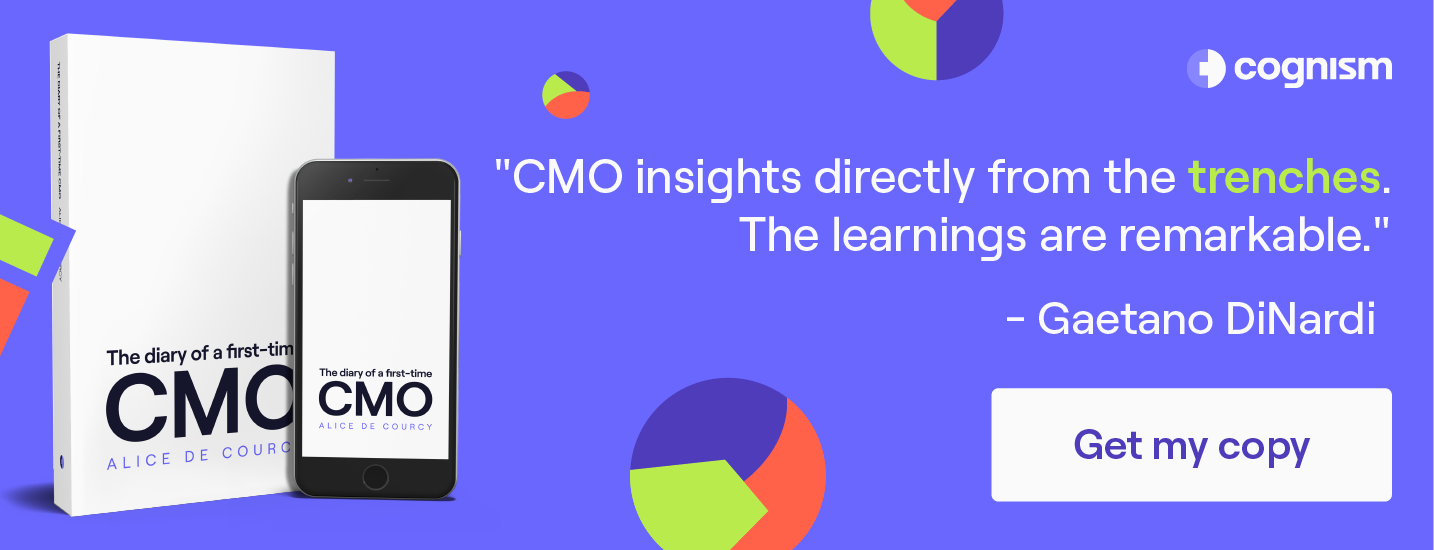What is Demand Marketing? Definition, Tips and FAQs
Demand generation marketing resources:
Demand marketing is the modern way of doing B2B marketing. As part of a go-to-market strategy, it helps to create customer engagement and shifts pipeline focus to prioritise intent.
Demand marketing aims to help your organisation reach new markets, build relationships with existing customers, and create demand for new products or services.
It’s an organic way to market across channels while building brand awareness. Results are based on revenue rather than lead generation.
Curious about the potential of demand generation marketing? Scroll 👇
Who does demand marketing?
Demand marketing focuses on creating demand rather than capturing it, so the whole marketing team is heavily involved in executing this strategy.
Content and campaigns play a pivotal role in creating brand awareness and reaching out to your audience. Their ideas spread across channels encourage buyers to interact with and build relationships with brands.
From there, leads with high intent enter the funnel for your sales team to nurture and convert.
Alignment between B2B marketing and sales is vital for demand advertising to work.
💡Learn how to create a demand generation marketing team.
Where does demand marketing sit in the B2B sales and marketing process?
Demand marketing is a long-term strategy.
It starts long before your prospects enter the funnel and continues throughout your relationship.
First, you need to optimise your revenue channels - most importantly, your website. From there, your marketing team must create valuable content to share on all your platforms, from ungated whitepapers to podcasts.
Alice de Courcy expands on building a winning demand marketing plan in her book, ‘Diary of a First-Time CMO.’ Read it 👇
Keep in mind that marketing on demand doesn’t end when prospects enter the funnel. Your sales and marketing teams must align to nurture, grow, and convert them into customers.
And even then, the process continues.
When marketing on demand, it’s crucial to build on your relationships with existing buyers, as they contribute to word-of-mouth referrals.
Demand marketing vs lead generation
Demand marketing is very different from lead generation marketing.
Let’s look at the key differences between the two:
Demand marketing
Here, marketers focus on creating demand through full-funnel marketing. Working closely with sales and implementing the right technology, they execute a mixture of paid and organic strategies, leading to increased revenue.
Demand marketing is want-based, meaning that if your content marketing material is impactful enough, your prospect will come to you rather than you having to go out and look for them.
Lead generation
B2B sales and marketing teams often work in silos when it comes to lead generation, creating an imbalance across the business.
One common lead generation tactic involves marketing and offering eBooks to collect email addresses and phone numbers. Sales teams then need to sift through and follow up on these leads.
Furthermore, lead generation focuses on Marketing Qualified Leads (MQLs) and Sales Qualified Leads (SQLs), which often results in high Customer Acquisition Costs (CAC) and poor funnel conversion metrics.
Watch this video from Cognism’s DG course—it will give you an overview of lead generation vs demand marketing.
The challenges of demand marketing and how to solve them
Like all types of marketing, demand marketing has its challenges.
Firstly, as you’re focusing on revenue and using organic lead generation strategies (like creating podcasts), measuring results is much harder.
The solution here is to ask your prospects how they heard about you. It’s as simple as that.
Secondly, demand generation marketing is about creating demand, not about forcing your marketing team to pull in leads who aren’t interested in your product.
The solution lies in changing the way you track. Switching to a more revenue-focused form of lead generation will help align your teams, reduce costs and increase your brand reputation.
With on demand marketing, you won’t be annoying uninterested prospects with content they don’t want. Instead, you’ll be attracting the right prospects at the right time.
Lastly, you might find it hard not to gate your content, but there’s a reason why it’s not a great fit for marketing on demand.
Here’s why:
When you offer value for free, people will keep coming back for more. This builds your brand reputation, helps spread awareness through referrals, attracts hotter leads, and helps your salespeople convert them.
Leads that come through ungated content show high intent, so they can skip the nurturing phase and go straight to booking a demo. This speeds up the sales cycle and often leads to a higher chance of success.
Tips for better demand marketing
Demand marketing might seem complex, but you’ll find it’s an easy recipe for success once you start doing it. Here are a few tips to help you:
1. Align your teams
Ensure that your teams and revenue targets are in sync. Many tools can help you do this - the aim is to produce reports you can analyse.
However, communication is vital, so be sure to hold regular meetings and keep everyone informed of all strategies and results.
2. Create personalised content
Start by creating several buyer personas. Once you know who you’re targeting, you can determine the best channels to reach them.
Then, you can personalise content for them specifically.
For instance, you might find one prospect prefers podcasts to videos, and you can then refine their customer journey based on their specific interests.
This article on demand generation examples, highlights some great use cases for personalised content.
3. Invest in paid
A large part of demand marketing is organic; however, paid has a top place at the table. Organic marketing works hand in hand with paid and can help strengthen campaigns.
With a demand generation paid strategy, you can set up profile targeting and reach the right people faster and with better accuracy.
Paid in the demand marketing world is not about collecting the contact information of uninterested buyers. It creates demand for your product through excellent content. Then, the buyer can convert when they’re ready.
4. Reach out to the community
Marketing on demand relies heavily on brand awareness and word of mouth. You want as many people to share or speak about your content and brand as possible!
Reach out to industry influencers or join a community to offer your expert advice. This will widen your reach and build your brand as a credible organisation that knows what it’s talking about. It also encourages buyers to refer you to their connections.
The 6 pillars of demand marketing
If you want to do demand marketing well, then be sure to stick to these six pillars. They are:
1. Customer success
Remember, the better the experience, the more likely you’ll get a referral from a customer. So ensure your CSMs are communicating with your prospects and customers well.
Furthermore, to get the most out of your demand marketing, you’ll need to conduct thorough research on what your customers want so you can provide them with the value they’re after.
2. Content distribution
The key to effective content marketing is to share it with your customers rather than waiting for them to find it.
Distributing content across social media and websites such as Reddit and Quora ensures buyers who enjoy your content will see and engage with it. In addition, this opens up more conversations and builds your reputation as a brand.
3. Deliver value
Tying in with content distribution, what you share needs to be valuable to your prospects. It needs to inform or educate to really stand out. So don’t stick to digital content; get out there and host events.
No matter where you are, you can share value by streaming a live webinar, sharing a video on social media, or speaking at a convention. Just make sure you’re giving your audience a good experience.
4. Reward loyalty
Identify your top customers and reward them - whether it’s with a VIP program or a freebie of some kind. This tactic builds loyalty and shows your customers you value them, ultimately encouraging referrals.
What you can offer is unlimited. Simply listen to what your customers want and deliver it to them.
5. Build a community
If you really want to offer your buyers a valuable product, you need to become an active member of their world.
Join or create a community for like-minded individuals to get together and share ideas. Don’t be afraid to reach out to B2B influencers to distribute or talk up your content.
6. Optimise and stay on brand
Keep on-brand with your B2B marketing. Decide what your values are and stick to them. It won’t be good if you’re saying one thing on one platform and something else on a different one.
Ensure consistency in your content and optimise your website for the user. Creating brand guidelines will help you achieve a consistent brand experience.
Demand marketing: metrics to track
When tracking metrics in demand marketing, remember that they’re a bit more abstract; the reason for this is that your focus should be on revenue generation, not lead generation.
Demand marketing metrics to track include:
Attribution
It’s a good idea to invest in attribution software to help track metrics. However, keep in mind that these tools measure what they’re programmed to track.
For instance:
If a few people visit your site from your Google ad, your attribution software will provide you with the analytics, but those customers may have simply searched for your name and clicked. Or perhaps they heard about you from a friend and clicked on your advert to get to your site faster.
Acknowledge these metrics, but don’t build your marketing strategies around them, as they might not be 100% accurate.
Leads
While lead tracking isn’t the focus of demand marketing, it’s still worthwhile to see how many actionable leads are entering the funnel from your content, who your sales reps are rejecting, and why.
Secondly, keep an eye on booked and attended meetings. This will help you refine your strategy after prospects enter the DG funnel.
Forms
Add another field to your contact form to find out how your prospects heard about you. You can then track where your traffic is coming from, meaning you can prioritise some channels over others.
Opportunities
By looking at your opportunity metrics, you can calculate the win rate for each funnel stage. When you start measuring this way, you can find the source of your leads.
Customer touchpoints
Tracking customer touchpoints gives you a better picture of what your customers are doing along their journey. These actions include:
- Visiting your website.
- Visiting multiple pages on your site.
- Signing up for your mailing list.
- Filling out a form.
- Downloading a piece of content.
- Downloading several pieces of content.
- Signing up for a free trial.
- Asking to speak with a sales rep.
Still unsure about how to measure demand marketing success? This video from Cognism’s DG course explains it all 👇
Demand marketing with tech
You can streamline demand marketing with many tech tools.
The problem is there are hundreds to choose from!
Cognism has made it easier for you by curating the following lists:
- The ultimate B2B marketing tech stack
- The best B2B marketing tools for successful teams
- The ultimate B2B sales tech stack
- The best tools used by sales leaders
- The best demand generation tools we tested
Demand marketing FAQs
What is demand marketing?
Demand marketing focuses on creating and nurturing a strong desire for a specific product or service.
Unlike lead generation, which is about collecting customer information for future campaigns, demand marketing aims to make customers actively want and pursue a product. Think of the buzz before a new product launch – that’s demand advertising in action.
Why is demand marketing important?
Demand marketing generates genuine buying intent instead of merely casting a wide net, ensuring you don’t waste resources on uninterested parties.
It builds authentic, lasting relationships in a crowded market, leading to sustained consumer loyalty and consistent revenue.
How is a demand strategy different from other marketing strategies?
While many marketing strategies aim at getting quick sales, a demand marketing strategy focuses on building long-term interest.
It’s about finding the right customers, presenting the product in a way they’ll like, and sustaining their interest over time.
How to use Cognism for demand marketing
Once you know who you want to contact, you need a quality list of people who match your ICP.
Or even better, a list of prospective customers who’ve shown intent to buy a product like yours.
With Cognism, you can search for people who’ve shown intent and create lists that match your ICP.
Armed with a quality list, you can launch your demand marketing campaigns with triggered emails. Your buyers will receive your messages exactly when they need them!
Press ▶️ to see how Cognism works for marketers.
And if you want to know more, hit the button below 👇
Cognism’s demand marketing course
You’ve read all about demand marketing. Now, it’s time to take it to the next level.
Cognism has prepared an 8-module crash course for marketing on demand, deep-diving into topics like paid ads, content and SEO, webinars, events and podcasts.
Best of all, it’s 100% free and ungated!
We’ll see you there 👇



